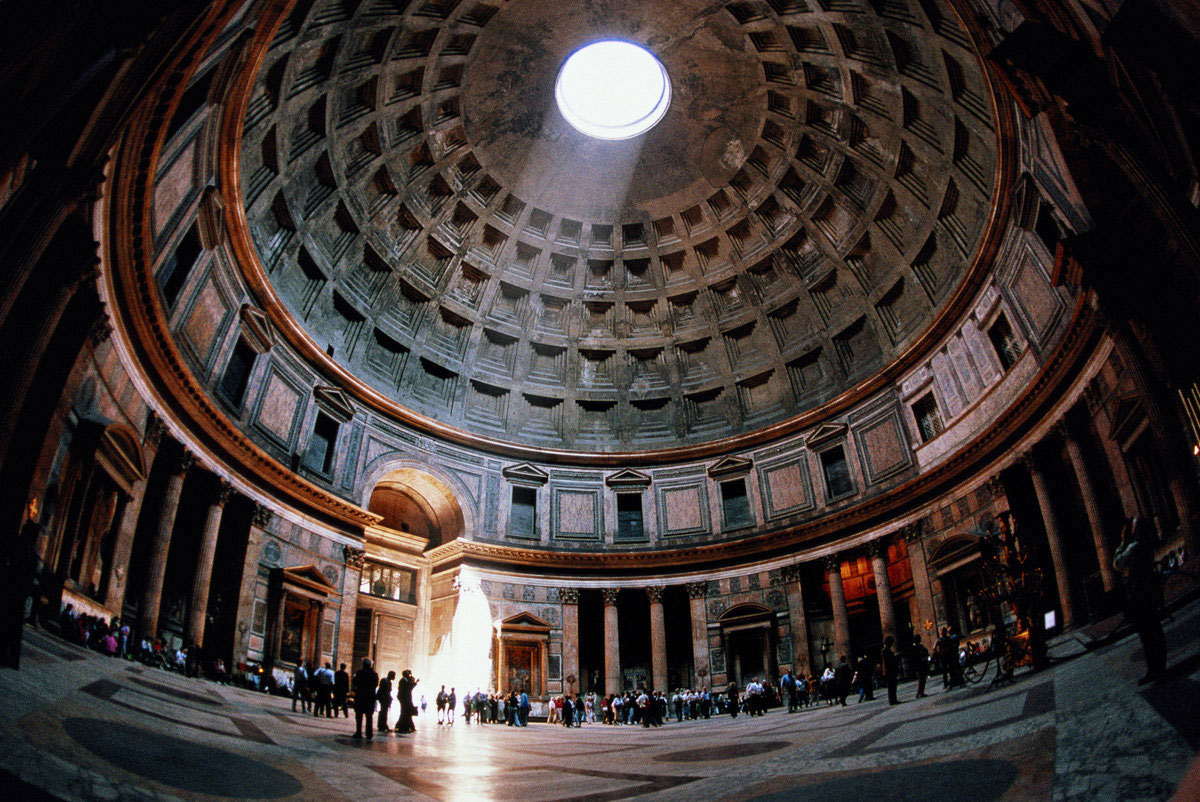The Pantheon- Rome, Italy
The Pantheon, one of the greatest engineering feats, was built in the time of Hadrian, the emperor known for his famous wall among other things, around 125 AD. This marvellous edifice has stood the test of time. While other monuments of the world crumbled, the Pantheon stands intact today, thanks to the brilliant design and engineering expertise of those responsible for this strikingly magnificent monument.
Structurally the Pantheon has an imposing entrance, constructed in the shape of a rectangle. The classic Greek influence is evident in the granite pillars that bear a triangular pediment. The entrance leads into a rotunda, topped by a dome. The entrance to the circular space has three rows of Corinthian pillars. Of these, eight are constructed in front, followed by eight more in two sets. This majestic rectangular entrance takes you into the rotunda.
That the circular structure should be able to hold up a 142-foot diameter dome for so many centuries stands as proof of the sound architectural knowledge, the combination of materials used and the precision to which the construction was carried out. At the centre of the dome is an opening called the oculus.
Every aspect of the building was planned carefully. The design of the steps is equally amazing. They are tapered in such a way that the base, which is 20 feet in thickness, is heavier than the top. The steps decrease in weight until they reach the oculus, where they weigh less and are just 7.5 feet thick. Strange as it may seem this brainwave of the architects involved was not picked up by future builders.
Handicapped though the builders were in those days, without the advantage of machines and high precision instruments, yet they were able to erect a monument that has stood for almost 2000 years. Besides, transportation wasn’t advanced. The only way they could move the materials was via the River Tiber. On land, the building material would have to be placed on carts and dragged by man or beast to the site.
The remarkable thing about the Pantheon is that except for the restoration of its massive bronze doors, no major repair work has been carried out on the structure, despite it having been built on marshy soil. In comparison, the leaning Tower of Pisa has undergone many renovations, in attempts to keep it from collapsing. The soft ground on which it was built has been blamed for this.
Copies have been attempted of the Pantheon. The Reading Room at the British Museum, as also the rotunda, named for Thomas Jefferson in the University of Virginia are examples. However, the Pantheon transcends every replica made of it in beauty and structural elegance.
The Pantheon has always been put to good use. Many famous people including monarchs have been buried there. From the eighth century to the present day, the Pantheon has been used as a church.
If you do get an opportunity to visit Rome, put the Pantheon on the top of your ‘must see’ list. It’s well worth the effort.

